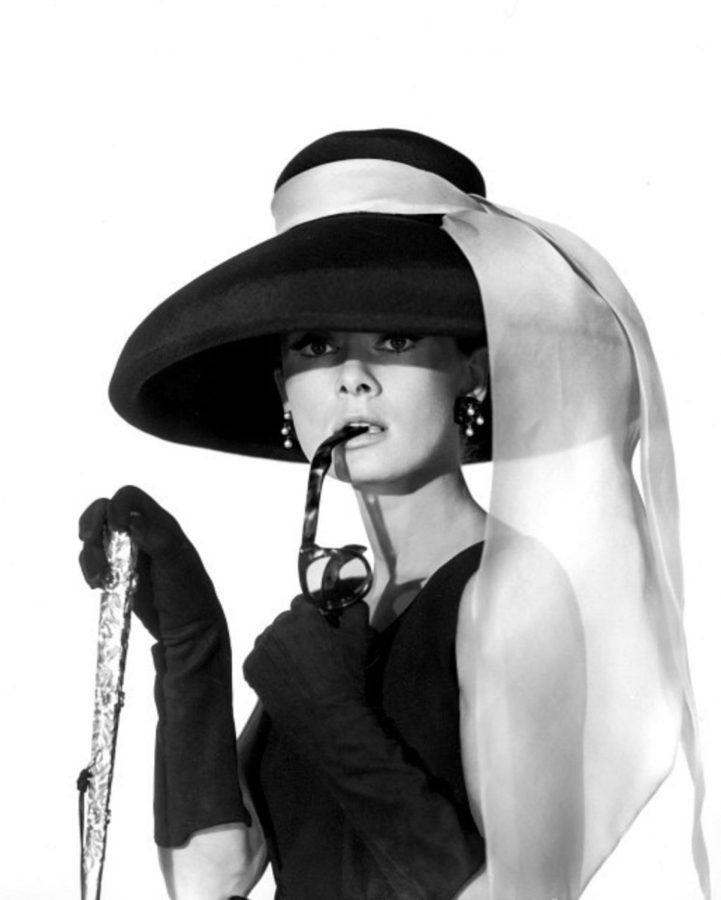The Impact of an Icon
Celebrating the mark Audrey Hepburn left on acting, fashion, and humanitarian aid.
Audrey Hepburn as Holly Golightly in Breakfast at Tiffany’s (1961).
October 27, 2021
The 60th anniversary of Audrey Hepburn’s famous appearance in “Breakfast at Tiffany’s” in October 1961 revitalizes her impact on the world. A star in the film industry, many remember her as the humble yet elegant emblem of 20th century fashion, entertainment, and kindness.
“I never think of myself as an icon. What is in other people’s minds is not in my mind. I just do my thing.” -Hepburn
The actress was born on May 4, 1929 in Brussels, Belgium. Hepburn’s father left her family when she was 6, with no forwarding address and no goodbye. With her mother, she moved to Holland during the war in hopes of safety in a country that pledged to stay neutral. Due to her residence in Europe, Hepburn spoke 5 languages: Dutch, English, French, Spanish, and Italian.
She saw many tragedies first hand in World War II, which motivated her to help the resistance. While her parents were Nazi sympathizers, Hepburn gave secret performances called “blackouts” to raise funds for the Dutch Underground and pass messages along to them, helping them avoid Nazi discovery.
At 16-years-old, Hepburn became a volunteer nurse in a Dutch hospital and helped a young British paratrooper named Terence Young, her future director over 20 years later in “Wait Until Dark” (1967). Later the two would joke that Young had been “shelling his favorite star” without even knowing it.
After the war in 1948, Hepburn moved to London for a ballet scholarship with Ballet Rambert, but was later told she was too tall (5’6), malnourished, and lacked intense training to become a dancer.
She had nearly starved to death during World War II, and survived by eating tulip bulbs. It was the first UNICEF agents assembled in 1946 who provided her with food and other assistance. This saved her life, and she was driven to help others, later becoming a Goodwill Ambassador for UNICEF.
“Everything I learned, I learned from the movies.”– Hepburn
In 1951, Hepburn was “discovered” by the French writer Colette while in Monaco shooting a small part in a film, and Colette insisted for her to star in the Broadway version of her novel “Gigi”. Hepburn made her Broadway debut that same year, and launched her career into stardom.
The actress has since then graced the silver screen in over 30 classic films such as “Roman Holiday”, “My Fair Lady”, “Sabrina”, “Funny Face”, “Charade”, and the thriller “Wait Until Dark”.
Her most recognized role, however, was appearing as Holly Golightly in the film “Breakfast at Tiffany’s”. She was styled by her close friend Hubert Givenchy in many of these films, and their friendship would have a lasting impact on the fashion industry.
“Givenchy’s clothes are the only ones I feel myself in. He is more than a designer, he is a creator of personality.” -Hepburn
Givenchy created the classic Little Black Dress featured in “Breakfast at Tiffany’s”, styled after the 1920’s designs of Coco Chanel. After Hepburn started wearing it everywhere, it became extremely popular.
Her signature style presented an organic and genuine image exuding an rooted knack for fashion. She was deservingly awarded a place in the International Best Dressed List Hall of Fame nine times.
With her animated expressions, svelte figure, and impish charm, Hepburn captivated millions of viewers and became the icon we know today. In the age of actresses like Marilyn Monroe, Hepburn held her own as she changed the way women were perceived in Hollywood.
“As you grow older, you will discover that you have two hands, one for helping yourself, the other for helping others.”– Hepburn on the importance of humanitarian aid.
Despite her immense fame, Hepburn remained modest and used her stardom to help others. While at the top of show business in 1967, she decided to retire from acting and dedicated the rest of her life to helping impoverished children around the world.
Hepburn worked in fields, nursed sick children, and spread humanitarian awareness to the public. She worked fervently for UNICEF, becoming a UNICEF Goodwill Ambassador in 1989. In December 1992, she received the Presidential Medal of Freedom in recognition of her work as a UNICEF Goodwill Ambassador.
Hepburn would later die of appendiceal cancer a month later in 1993, near her home in Switzerland.
She was a woman of humbleness, elegance, talent, and compassion for others and her legacy will continue to remain long after her death.
“I have learnt how to live…how to be in the world and of the world, and not just to stand aside and watch.”– Hepburn in her role of Sabrina Fairchild, from “Sabrina” in 1954


